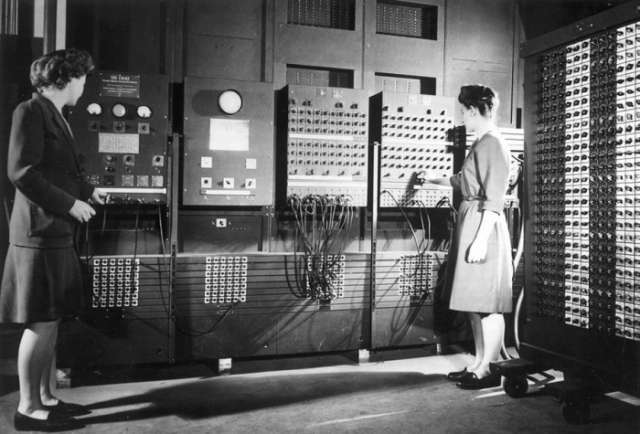“Brain computer” is a catch-all term for a range of technologies. Definitions diverge in terms of where the computer is located, and its levels of processing power. Today’s brain computers are relatively simple devices that exist for medical purposes and rely on crude connections to the brain. They are almost always low-power devices worn on the outside of the body, which deliver blunt signals through the skin to relevant regions of the brain. Hundreds of thousands of people already use these machines to bypass today's input/output systems—such as fingers and voice or eyes and ears—to communicate directly with the brain. Largely they are used to make up for a damaged bodily function, such as hearing loss.
The simplest type of brain computer is a cochlear implant. These devices transform sound waves into electrical signals, to stimulate the auditory nerve directly. The computer controlling this process sits behind the ear, connected to a microphone and a wearable battery pack. It transmits both power and soundwaves—transformed into electromagnetic signals—to an implant just inside the skull, next to the ear. That implant receives the signal wirelessly, translates it into an electrical current and passes it down a wire, past the biological machinery of the ear, to an electrode embedded in the auditory nerve. Another sort of existing brain computer is called a neurostimulator, used in the treatment of Parkinson’s disease. It is usually implanted under the skin on the chest or lower back. It sends electrical signals to parts of the brain called the basal ganglia, which are associated with control of voluntary movement.
Another form of brain computer is emerging out of Silicon Valley—albeit one that is, for now, still on the drawing board. Entrepreneurs think that devices could go beyond simply replacing lost functions: the brain could be connected to computers and to the internet to give it entirely new functions that are beyond human beings’ abilities today. Imagine Google searches that deliver their result to the brain before the question is consciously asked; or direct, brain-to-brain communication, unhindered by devices. Elon Musk, with his new company Neuralink, and Bryan Johnson, with a slightly older company called Kernel, are leading the charge. For now, the function of the brain is not understood in enough detail to read and write information at this level of linguistic communication. But for the optimists of Silicon Valley, it is only a matter of time.
More about: #BrainComputer
















































